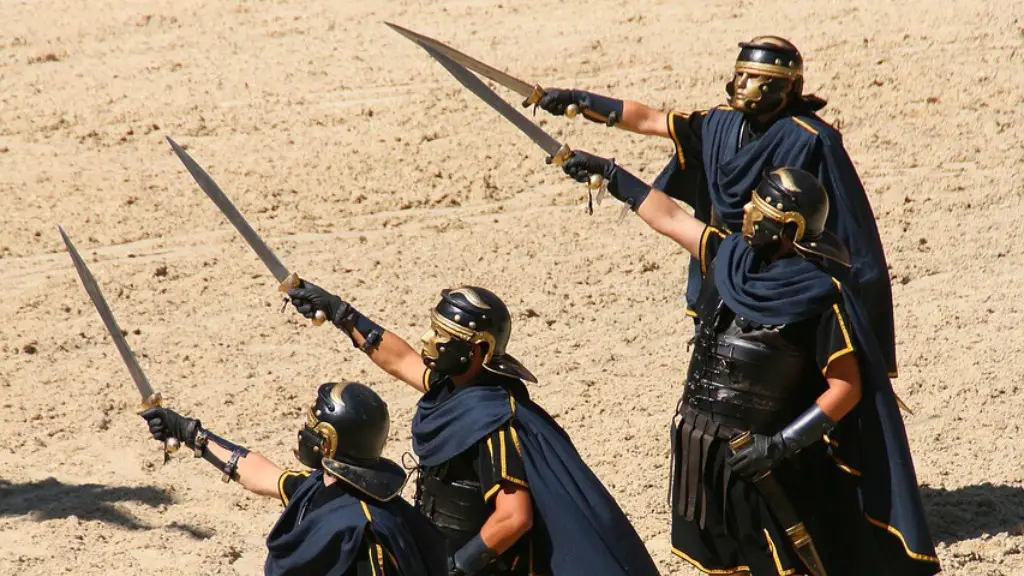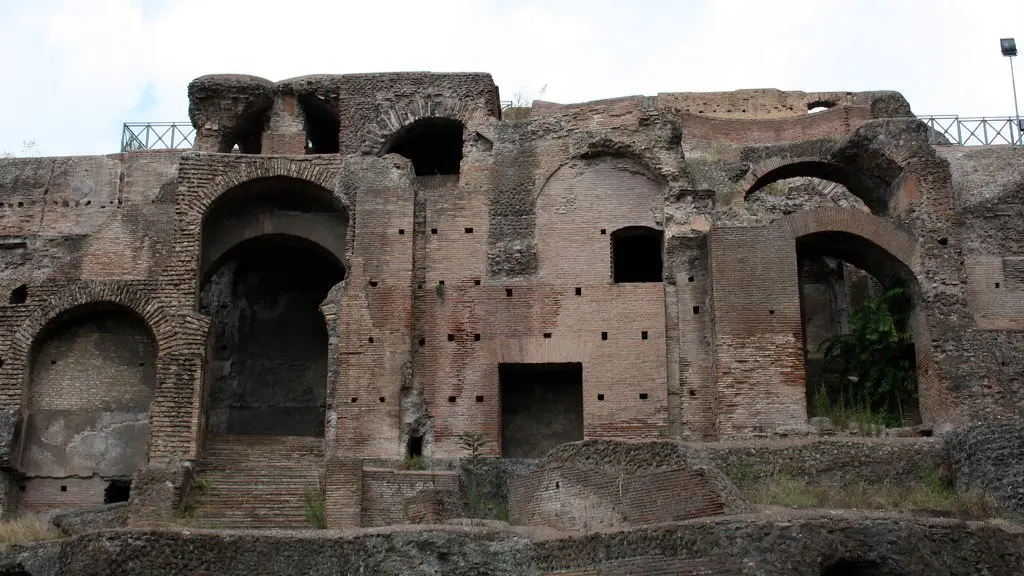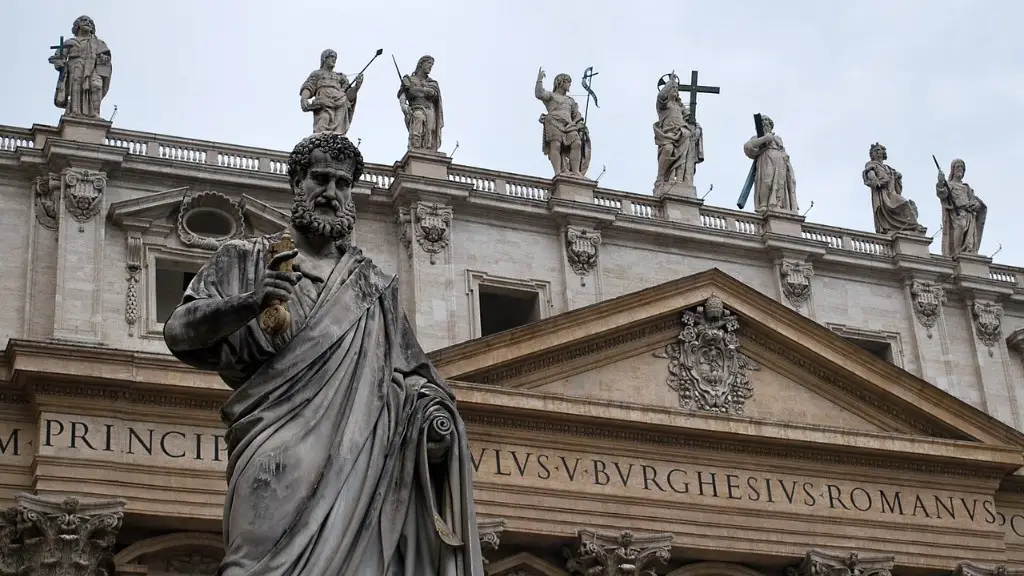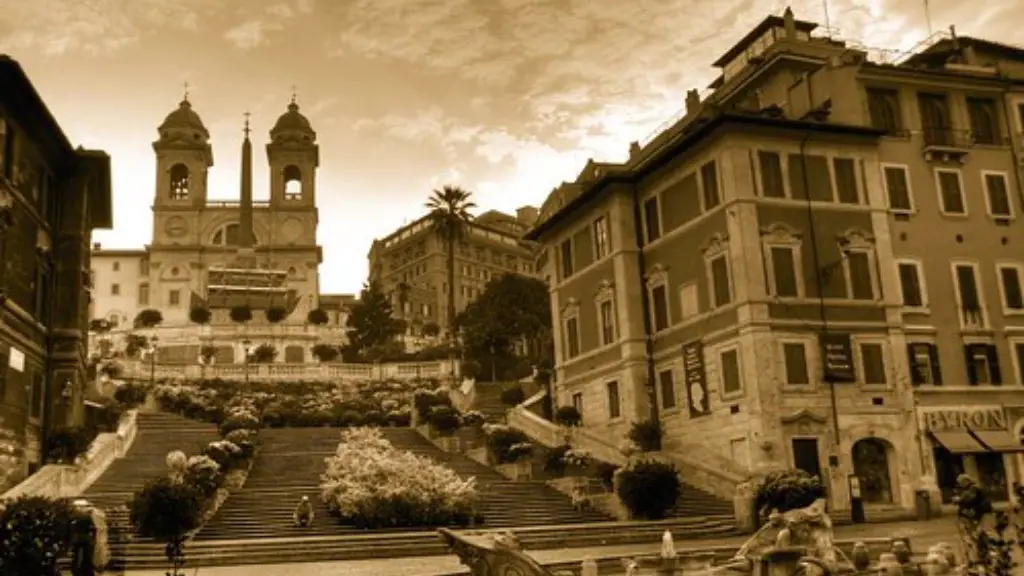If you have studied history, it is likely you have come across Ancient Rome and Ancient Egypt. Many people believe they are similar, yet they have distinct differences that set them apart from one another. Both had highly developed civilizations and political, cultural, social and legal systems that set them apart from other societies. But the differences between Ancient Rome and Ancient Egypt are significant.
The most obvious difference between Ancient Rome and Ancient Egypt is in their geography and climatic conditions. Rome was in a more temperate region, with a cooler climate year-round. Egypt, on the other hand, was in a much more arid climate, with much hotter summers and milder winters. This limited the types of crops they could grow and led to the development of different types of architecture.
Another difference in the two societies was in the structure of their governments. Rome had a republican form of government, where elected officials served for terms and had a strong vision for their city’s future. Egypt, on the other hand, had a theocratic government with a powerful Pharaoh ruling as an absolute ruler. This was a hierarchical system, where everyone was considered to be of lower status than the Pharaoh.
It is also important to consider the differences in the religious beliefs of Ancient Rome and Ancient Egypt. In Rome, the primary religion was Roman paganism, which was polytheistic and focused on the gods and goddesses of the pantheon. In Egypt, the main religion was based on the worship of a single god, Ra, and the afterlife was seen as highly important. This was reflected in their burial practices, where the bodies of the deceased were mummified as a preservation process.
The social systems of Ancient Rome and Ancient Egypt were also quite different. In Rome, slavery was an accepted part of society, while in Egypt it was seen as a form of punishment and those in bondage were generally well treated. The wealthy and powerful in both societies were given special privileges and had access to resources not available to the rest. In other words, the classes were very distinct in Rome and Egypt.
Economically, Ancient Rome and Ancient Egypt shared some similarities, but there were differences as well. Rome and Egypt relied heavily on agriculture and trade for their wealth, but Rome was able to accumulate more wealth from its military conquests, while Egypt was able to build its wealth through its expansive trade network. In terms of the type of goods traded, Rome relied more on the production of goods for export, while Egypt had more of a focus on luxury goods.
Finally, it is important to consider the architectural styles of Ancient Rome and Ancient Egypt. In Rome, the most popular style of architecture was the Classical style, which featured many monuments and buildings that still exist today. In Egypt, the main style was the Pharaohic style, which incorporated many of the same elements as the Classical style but usually with more ornate details. This was reflective of the religious beliefs of the Egyptians, which is why many of the ancient monuments still exist today.
Artistic Expressions
Art was an integral part of the culture and social order of both Ancient Rome and Ancient Egypt. In Rome, the art of sculpting and wall painting were particularly popular, whereas in Egypt sculptures and hieroglyphics were the primary forms of expressing oneself aesthetically. Roman art often served as a way to glorify the political structure of the society, while Egyptian art was used to capture the essence of their gods and the many aspects of life.
In the visual arts, painting and sculpting were both popular in Roman and Egyptian art. However, there were differences in how these art forms were approached. Roman art, for example, depicted scenes from mythology and focused more heavily on realism, while Egyptian art focused on the idealization of certain figures, including the Pharaoh. This could be seen in their various art forms, such as reliefs, statues, and hieroglyphics.
Music was also a huge part of life in Ancient Rome and Ancient Egypt. In Rome, popular music consisted of dramatic lyrical chants and dances that often featured the playing of various instruments. Music was seen as a form of entertainment, as well as a tool of political propaganda. In Ancient Egypt, the main instruments were wind instruments, such as flutes and oboes, although percussion and strings were also used. Music had many spiritual connotations, as it was believed to be a way to communicate with the gods.
Literature was also an important form of artistic expression for both Ancient Rome and Ancient Egypt. Roman literature focused more on public issues, such as government, war, and religion. This included many of the works of famous Roman authors such as Julius Caesar, Virgil, and Cicero. In Ancient Egypt, literature focused more on tales of the gods and the supernatural. The most famous works are the “Book of the Dead”, the “Book of the Opening of the Mouth”, and the “Book of the Coming Forth by Day”.
Education System
The method of learning in Ancient Rome was quite different to that of Ancient Egypt. In Rome, education was mainly run at a local level, with schools established by the wealthy elite for their own children. Education was based on the oral tradition, with knowledge passed down from generation to generation. Education was largely focused on teaching the students how to read and write, as well as rhetoric and moral instruction.
In Egypt, however, education was organized at a central level and was highly structured. It was based on writing and arithmetic, and involved learning mathematical equations and concepts, as well as memorization of religious texts. It was an elite form of education and those who attended these schools were well respected by the society. It was also very sought-after, as only the top few students were selected to attend.
When it comes to the teaching method, Ancient Rome and Ancient Egypt both emphasised memorizing as the primary way of teaching. In Rome, teachers would often discipline their students through physical punishment, while in Egypt students were encouraged to think critically and ask questions. Despite this, both systems of education were highly effective and successful in their own way.
In terms of what was actually taught, the two societies had different focuses. In Rome, the main focus was on public speaking and the study of rhetoric, while in Egypt the primary focus was on mathematics and science. This is reflective of the societies’ respective beliefs and values, which were also quite different.
Technology and Engineering
The technologies and engineering feats of Ancient Rome and Ancient Egypt were quite different, with both societies achieving great feats that were only possible with the knowledge and understanding of certain principles. In Rome, one of their greatest feats was the aqueduct system, which was an elaborate way of collecting and delivering water to the city. This is still in use today and provides an example of the engineering capabilities of the Roman Empire.
In Egypt, they also achieved amazing feats, such as the construction of the Pyramids and the engineering of the Nile River. The pyramids were made using stone blocks that were quarried and transported, then assembled into structures that are still standing today. And the Nile River was used for transport, agriculture, and for the storage and supply of water.
In terms of technology, both societies were quite advanced. Rome had a knowledge of metallurgy, which was used to build weapons and tools to be used in warfare, as well as a knowledge of engineering, which was used to build elaborate structures such as roads and aqueducts. In Egypt, they had a knowledge of mathematics, which was used to build the pyramids and develop various agricultural techniques.
While both societies achieved great feats of engineering and technology, there were differences in how they were approached. Rome relied more on a mathematical and systematic approach, while in Ancient Egypt the approach was more spiritual and religious in nature. This reflects the respective beliefs of the two societies and speaks to the complexity of their respective cultures.
Government Structures
The government structures of Ancient Rome and Ancient Egypt were quite distinct from one another. In Rome, the government was based on a republican form of democracy, with a Senate as the main decision-making body. In Ancient Egypt, the government was a theocratic system with a powerful Pharaoh ruling as an absolute ruler. The level of political power held by the Roman Senate was quite different to that of the Pharaoh in Egypt.
In addition to this, taxation systems were also quite varied between the two societies. In Rome, taxes were largely levied on landowners and those who traded goods and services. In Ancient Egypt, taxes were generally more progressive, with the wealthy paying higher taxes than the poor. This was in part due to the large differences in wealth among the different classes.
Both Ancient Rome and Ancient Egypt had laws and punishments that were enforced in society. In Rome, those convicted of crimes were punished with exile, fines, or in the most serious cases, execution. In Ancient Egypt, punishments were often seen as symbolic acts of justice, with offenders having to perform public acts of repentance or undertaking labour tasks as punishment.
Finally, both Ancient Rome and Ancient Egypt had a complex and intricate system of public officials. In Rome, government officials were elected to represent their constituents, while in Egypt the Pharaoh appointed officials to oversee the affairs of state. This reflects the different political systems of the two societies and points to the unique features of each.
Lasting Legacies
The influence of Ancient Rome and Ancient Egypt can still be seen today in various aspects of life. In terms of architecture, many monuments and buildings constructed in the Roman and Egyptian styles still exist today – the Colosseum in Rome and the Pyramids in Egypt are two examples. In terms of religion, Roman polytheism and Ancient Egyptian beliefs continue to shape the spiritual views of many societies.
In terms of language, Latin was the language of Ancient Rome and is still the official language of many countries today. In Ancient Egypt, hieroglyphics was the main form of communication and is still studied by linguists and scholars. In terms of art and culture, Ancient Rome and Ancient Egypt have left a lasting impression on various aspects of modern life, from literature to music to art.
The societies of Ancient Rome and Ancient Egypt show great similarities and yet many differences. It is these differences that make them so interesting to study – both were highly advanced cultures that made key contributions to the development of the modern world. From their architecture and art to their laws and languages, there are many aspects of Ancient Rome and Ancient Egypt that continue to shape and influence life in the present day.





